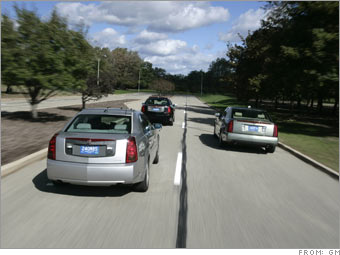With all but a small fraction of crashes caused by human error, a system of driverless cars will be much safer than anything possible with humans at the wheel.
Computer-driven cars also hold the promise of higher speeds and lower fuel consumption. Streams of cars networked together could travel down major highways at a single high rate of speed without the risk of hitting each other. In cities, it has been estimated that intersections could handle hundreds of times as many cars as they do know with none of the cars ever needing to stop.
Travelling at steady speeds uses less fuel than accelerating and decelerating for stop signs or bottlenecks. Also, with the risk of collision greatly reduced, cars would need less extra weight, in the form of airbags and steel, dedicated to occupant protection.
Fully self-driving cars are possible on our current roadways using technology that could be in place in as little as a decade, said Larry Burns, General Motors' vice president for research and development.
Many barriers to the driverless car are social rather than techinical. There are privacy issues. Many drivers are already uncomfortable with "event data recorders" in most new cars that record everything a car was doing immediately before an impact. What will the reaction be to cars that continuously broadcast everything a car does?
There are also issues of trust. Some drivers will always put ultimate faith in their own driving skillls no matter what. And many will simply miss the pleasure of driving a car.
With concerns rising over "distracted driving," however, it's clear that most people would rather be doing something else while they're behind wheel.
"We've concluded that, for a lot of people, driving has become the distraction," said Burns.

